I an
nurturing a question in my mind, since I visited the King's palace
and the Queen's bath house yesterday, as to where the Queens of the
kingdom actually resided. I later found out, that a separate
barricaded enclosure or a harem existed for all the queens and the
concubines of the king. I am on my way now, to see this area, also
known as Zenana Enclosure. This enclosure is quite far away from the
royal palace and also has a strong wall around it. In one of the
places this wall has fallen to ruins. Just one look at the broken
wall is enough to convince how strong this fortification must have
been.
Protecting wall of Zenana enclosure or Harem
This
Jenana enclosure was built like a jail. Once a girl enters this
enclosure, it was almost impossible for her to get out. I have read
one interesting story about this. In one of the villages in the
jurisdiction of Hampi's staunch enemy state, the Bahamani empire,
there lived an goldsmith, who had a stunningly beautiful daughter
named as “Prayal.” This girl not only was very beautiful, but was
also an expert in all the arts like music, painting and conversing
with others. Somehow. King Devaraya of Hampi came to know about her.
The king sent one of his court Brahmins to her village to somehow
bring her to Hampi and also sent an expensive choker type gold
ornament to entice her. This clever girl however knew that going to
Hampi would be like going to jail and she would never be able to meet
her parents again and refused to go. King Devaraya felt very
offended with her denial and himself lead an army of 30000 soldiers
to her village. After hearing that the king is marching with his
army, this girl, along with her parents, disappeared in the jungles.
The army of Hampi caused great amount of destruction in the Bahamani
empire region around the girl's village and returned empty handed.
When Bahamai Sultan came to know about this, he collected a huge army
and marched to Hampi itself. King Devaraya had to finally sign a
treaty with the Sultan and had to pay a ransom of 1 Million Gold
coins, 50 Kg of Pearls, 50 elephants, 2000 male and female slaves
and had to marry off his own daughter with Bahamani Sultan.
While
going around the Jenana Enclosure, I am getting reminded of this
story again again. This enclosure, surely must have felt like a
golden cage for all the ladies who stayed within its perimeter. I
cross the entry gate. There is a huge open ground ahead of me. At
the middle there is a stone brick plinth, about 150 feet long and 90
feet wide, of the Queen's residence. This plinth is stepped and on
each of the steps, just like the royal palace, there are stone panels
with extremely delicate carved patterns. A Sandal wood palace once
stood on this plinth. Just opposite the Queen's residence, there was
a shallow lake (now empty). At the center of the shallow lake there
is a platform again with delicate carved panels on all sides. A
building known as “Jalmahal” or lake palace was built on this
platform. Being in the middle of a lake, this structure used to
remain cool even during hot summer. There is also another water
reservoir, for use of the enclosure inmates. In one corner of the
enclosure, a building without any windows, still stands. This was
used to store all the gold, precious jewels and other expensive
things.
There
is one more building that looks like a half bloomed lotus and still
stands erect, known as “ Kamal or Chitrangani Mahal” or Lotus
Palace. This building with brick construction and lime mortar
plaster, has a unique kind of design which appears like fusion of
Muslim and Hindu styles of construction and probably was saved from
the invaders because of that. There are huge open arches on all sides
of the building with lotus buds embossed on inside of the central
dome on ceiling. The arches on sides have nice delicate design
patterns created in the plaster and were covered from inside with
huge silk curtains. Arrangements for anchoring the silk curtains can
be still seen.
Arches and decorative work
A guard tower, only female guards were deployed
Bass relief of serpent God
To the
northeast of Jenana enclosure, are the elephant stables. 12 elephants
used to be housed here for the use of the Queens. The elephants were
never chained at their feet but near their chest and the chain was
hooked at the ceiling, where a suitable iron hook was fixed. The
staff attending the elephants used to stay nearby in a building with
a very high plinth. This building was also used by the ladies to
mount the elephants.
Our
bus is now moving north to last of the places, I intend to visit in
Hampi, the “Viththla Mandir” or the temple of deity know as
“viththala.” These ruins are known as best of what Hampi offers
to the visitors. The bus stops quite far away from the temple site. I
get a feeling that I would have to walk again over a large distance
in the hot sun to reach the temple. However, I can see ahead, a
battery operated stylish minibus, available from this point onwards.
These buses have been provided by the Government to prevent any
damage to these world famous ruins with diesel or petrol smoke.
The
first stop, where the bus stops is a huge weighing balance frame made
from stone. The balance was used to weigh the king with gold on
special occasions. The King would sit in one pan and the gold was put
in the other pan, When the pans balanced, that gold was donated to
the poor.
King's weighing balance
The
bus moves to the next stop on the bank of Tungabhadra river. This is
one of the most scenic spots found in Hampi, with azure blue sky
above, the rocky hills all around and picturesque river bed right in
front of me. The scene is so stunning that I do not feel like moving
away from this place. Just on the bank of the river, there are ruins
of a dwelling, where Karnataka's greatest saint poet, Purandardasa
stayed once. The river can be crossed here in huge wicker baskets. I
feel like doing it, but I have to move on as there is no time left
for this. Just on the other bank, there is a tall hill called
“Anjaneya Hill.” A brilliant white temple of deity “Anjaneya”
or “Maruti” glistens in the bright sun light on the hill top.
The
Bus is now leaving for the main attraction, “Viththala Mandir.” I
get down from the bus just near the entry gate with a Gopura or a
tower. Opposite to this, is a familiar view, a long bazaar with rows
of stalls or shops constructed from stone slabs, now in ruins, on
both sides of a longish pond or a water channel like what I saw in
Krishna Bazaar. This place was Hampi's main cattle market. The
middle water tank was for feeding the animals kept for sale. Traders
from far off lands like Arabia would bring Horses here along with
local cows, bulls, goats etc. I turn back and look at the Gopura,
which is much damaged now, but whatever remains has stunningly
beautiful figures sculptured on it.
I
enter the temple court yard. An enormous view unwraps itself before
my own eyes. Right ahead, in a straight line stand 3 platforms
called as “Dhwajapeeth” or Flag pedestal, “Jyotipeeth” or
pedestal of a flame and “ Balipeeth” or Sacrifice pedestal.
Behind this, but in the same straight line is a large sized “Tulsi
Vrindavan” or the Basil shrub Pot, made from stone. Behind this,
is the world famous chariot of Hampi, carved from a rock. The main
temple hall is at the end of this straight line.
On
both sides of the main temple hall, there are open structures without
any walls with highly decorated supporting pillars. The structure on
right was a kitchen and the one behind was used for chanting
religious songs or “Bhajans.” The structure on left was used for
solemnizing marriages. The structure in front of this marriage hall
is a dance hall built by King Krishnadevaraya. His second wife,
“Chinnadevi” used to dance here on special festival days like
Dussera. Arrangements are provided to enclose the dance hall in
curtains so that only selected few can watch the dance performed by
the Queen. On this day Queen would dance at 3 places; Krishna
Temple, Virupaksha temple and this Viththala temple.
I am
now wandering around the temple court yard. The first and the
foremost sculpture that I see is obviously the Rock Chariot. This is
not a monolith but has been assembled from separate rock parts made
independently. The joints have been hidden so well that it appears
that it has been carved out of a single rock. This Chariot was a
temple of an eagle, supposed to be the carrier of Lord Viththala and
hence has been set up right in front of the main temple. On three
sides of the Chariot, bass reliefs describing various wars between
Gods and Demons, along with other decorations are seen. The front
side has the entrance door and a stone ladder. The 4 wheels of the
chariot also are made from rock and could rotate on axles made from
stone. Wheel are decorated with flower patterns. The whole chariot
was painted with bright colours and remnants of the paint are still
visible at some places. Two pull this chariot, two horse sculptures
were in position. These are now destroyed and their hoofs and tails
only remain now.
Musical Pillars
A pillar from dance hall
Two
elephant sculptures have been kept in their place by Archeological
department.
The
main temple hall constitutes of four wings. On the sides of the
eastern steps, there are two elephant sculptures, whereas bass
reliefs of an imaginary animal “Yalis” adorn the north and south
steps. The entire plinth area is decorated with beautiful bass
reliefs which include reliefs of horses and their trainers. In the
temple halls there are pillars with fantastic engraving work. The
pillars in the front have carved wind pipes, which can create all
notes like Do Re me.... etc. of a musical scale, when hit with a
wooden hammer. It is said that other pillars produce sounds, that
appear like various musical instruments. To prevent damage to the
pillars, hammering the pillars is no longer allowed. The eastern wing
is known as music hall and has bass reliefs of musical instruments
and players only. Southern wing has bass reliefs of the imaginary
animal “Yalis” only. Northern wing has bass reliefs of Lion-Man
God “Nrisimha” only. Western wing does not exist any more. Ahead
of this main temple hall, is the sanctum of the temple with bass
reliefs of lotus flowers on outer walls.
There
are no idols in the temple, which I am told were taken to Pandhapur
town in Maharashtra state. Perhaps a hearsay without any basis. I can
not be sure. Viththala temple no doubt is the best place in Hampi to
visit and if one has very little time, he should definitely see this.
A full relief sculpture near east entrance steps
The
final war between Hampi army led by king Ramaraja and joint forces of
four kingdoms formed after demise of Bahamani empire, and known as
“Nizam shahi, Adil Shahi, Barid Shahi and Imad Shahi” took place
at Banihatti on 23rd January 1564. The famous
“Malika-e-Maidan” or Queen of the battle, gun of Vijapur was used
for the first and the last time in this battle. The Hampi king
“Ramaraja” was killed in this battle and Hampi army was defeated.
For a period of 6 months afterwords, enemy forces completely
destroyed the once stunning beautiful capital of Hampi and converted
it into ruins. Even then, as I have mentioned earlier, the process
of Islamization of India, which was stopped by Hampi empire could
never recover again.
Few
decades after demise of Hampi empire, a new form of Hindu power rose
in the Deccan, led by a brave general; Shahaji Bhonsle. In the
ensuing power struggles, all other kingdoms except “Adil Shahi”
were destroyed and the power struggle in the Deccan revolved around
this kingdom and Bhonsale dynasty for next century before entry of
Mughals from Delhi.
In my
Deccan safari, I have now to go back by 1000 years from times of
Hampi empire and to the times of the Chalukya's, who were supreme
lords of the Deccan around 700 CE.
(To be
concluded)
7th
December 2012

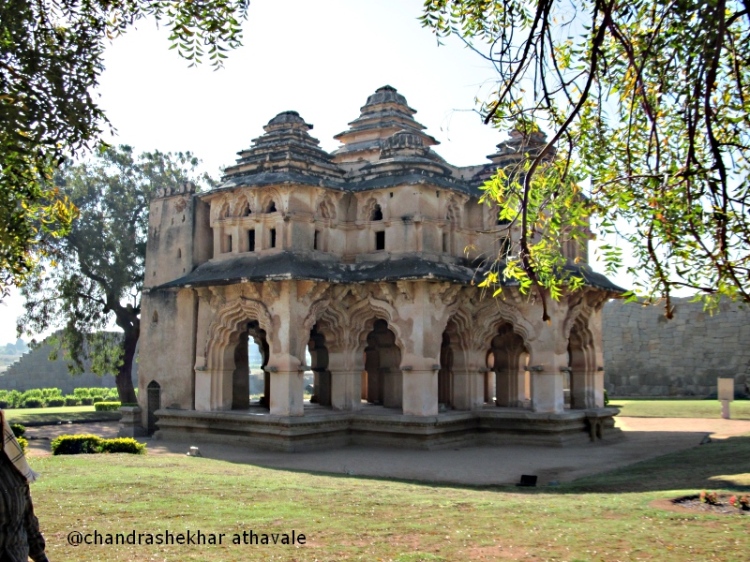



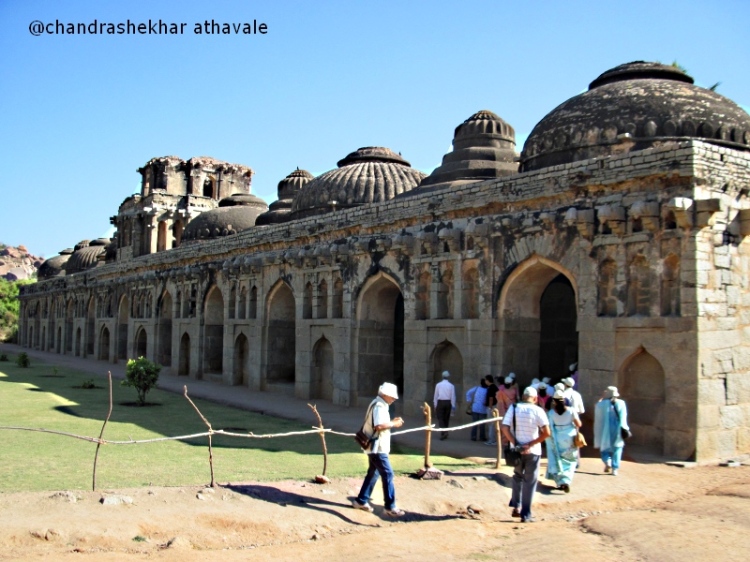



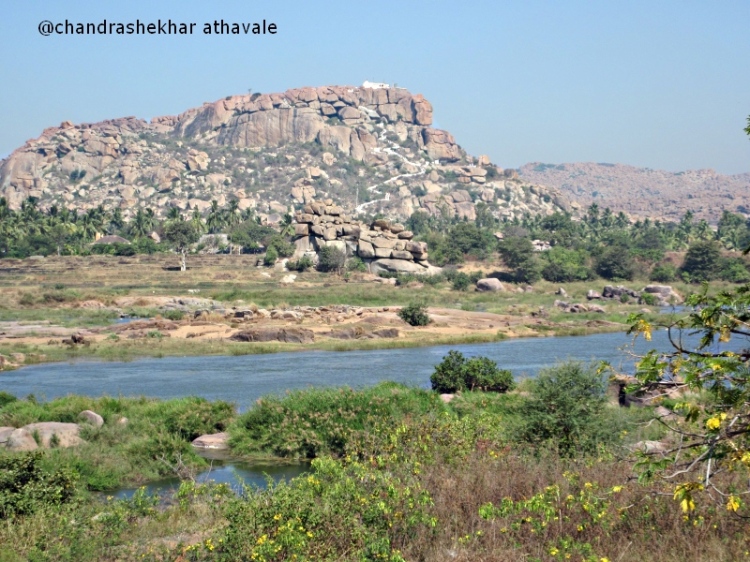


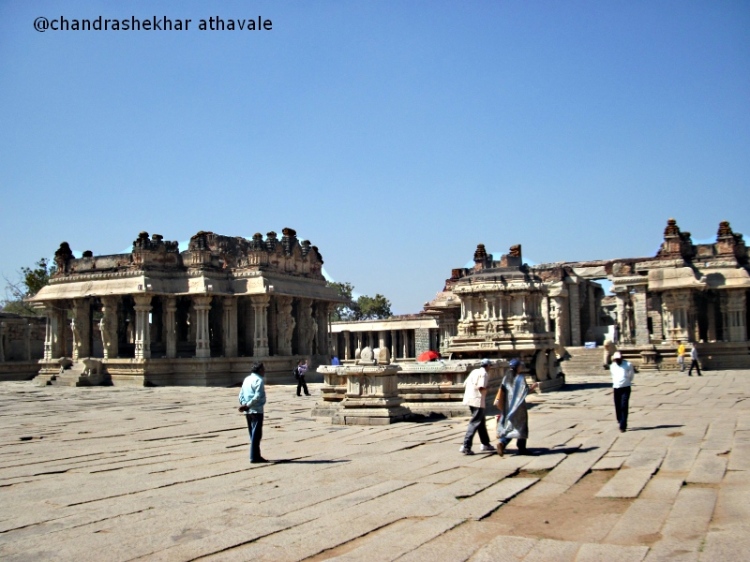



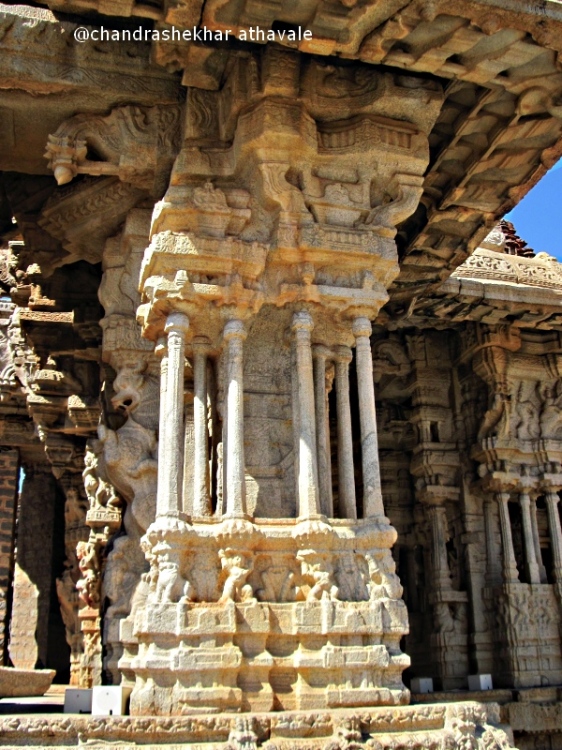
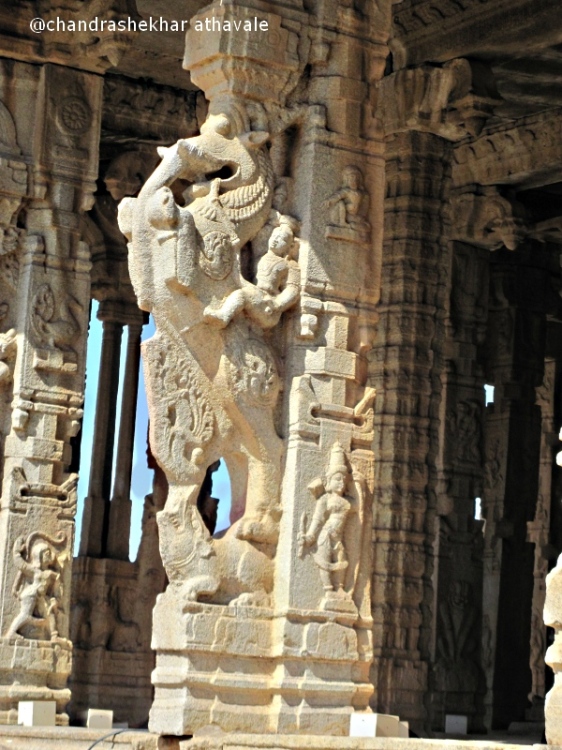
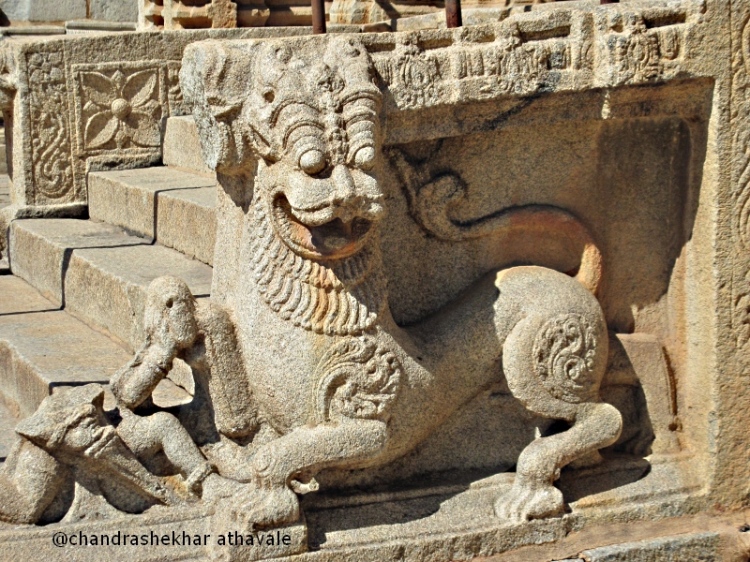
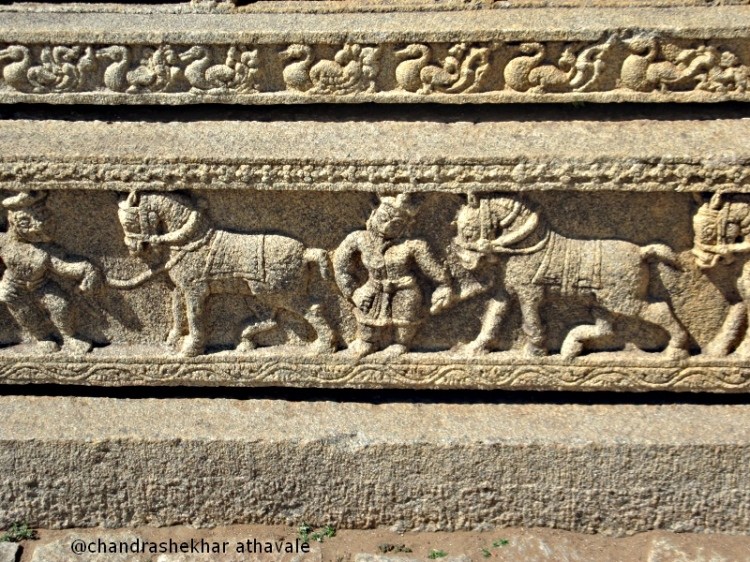



No comments:
Post a Comment